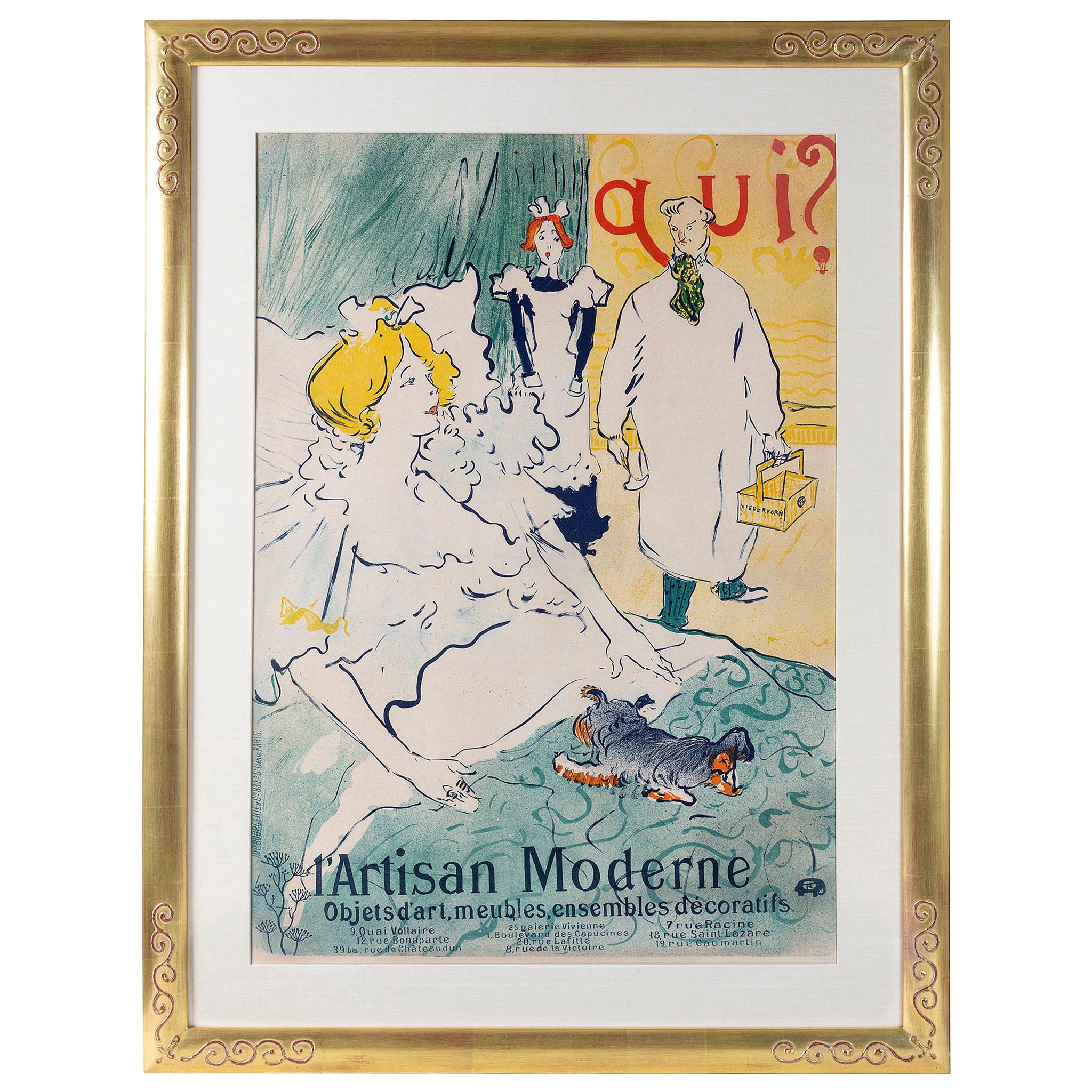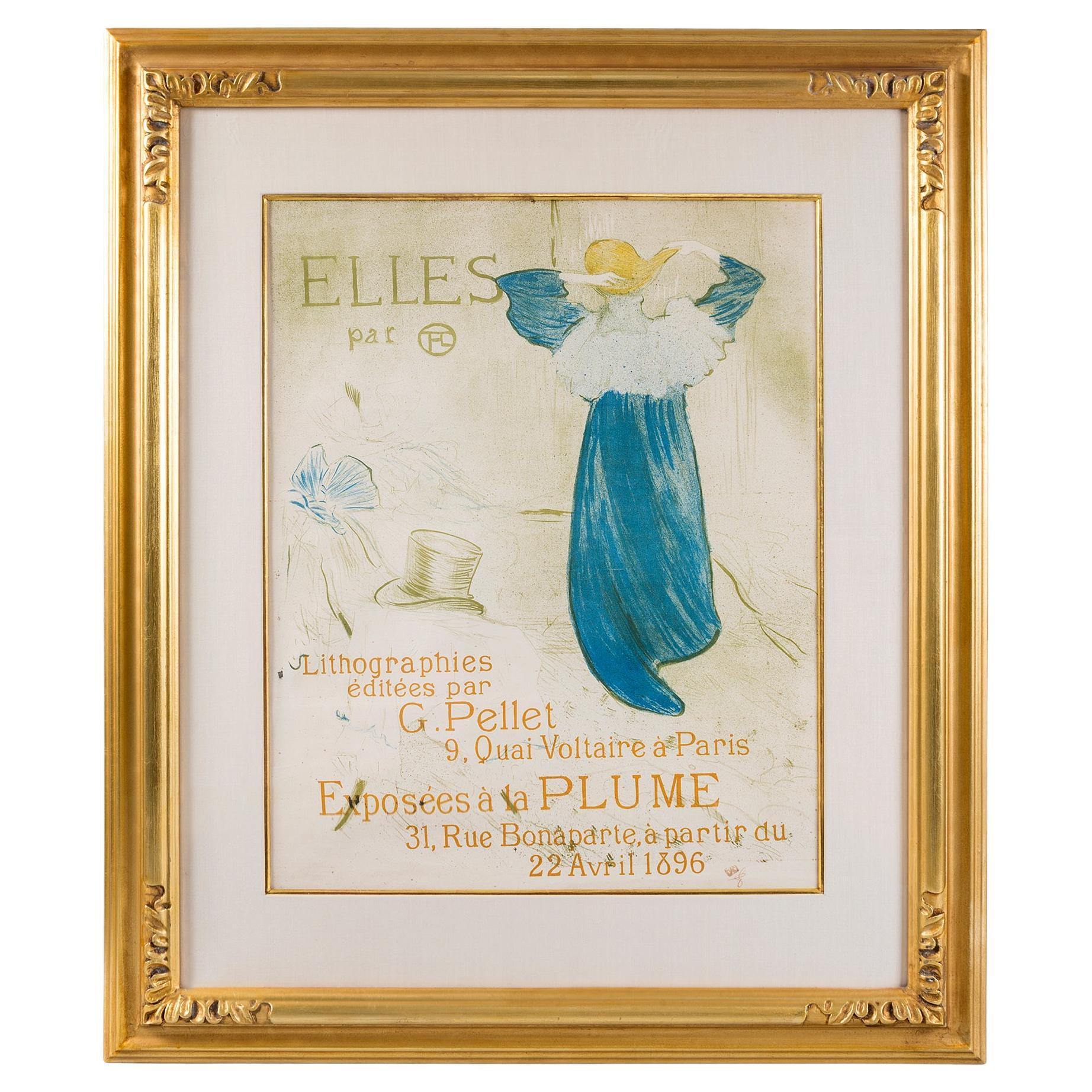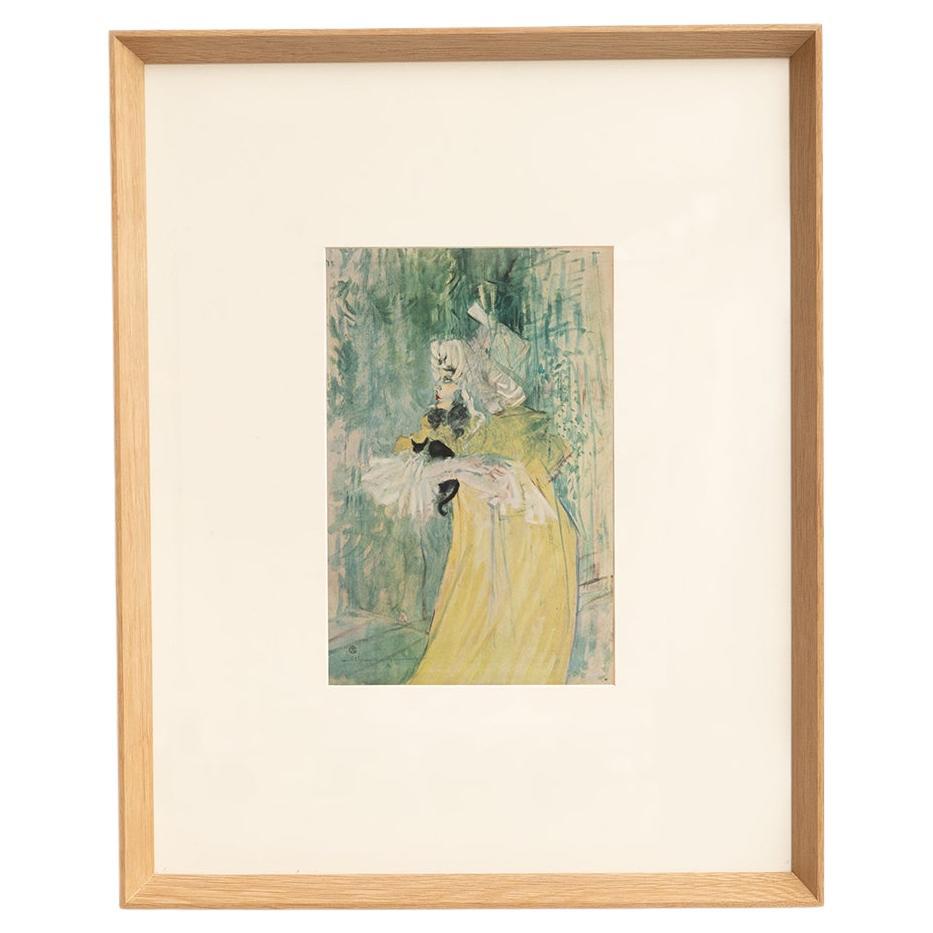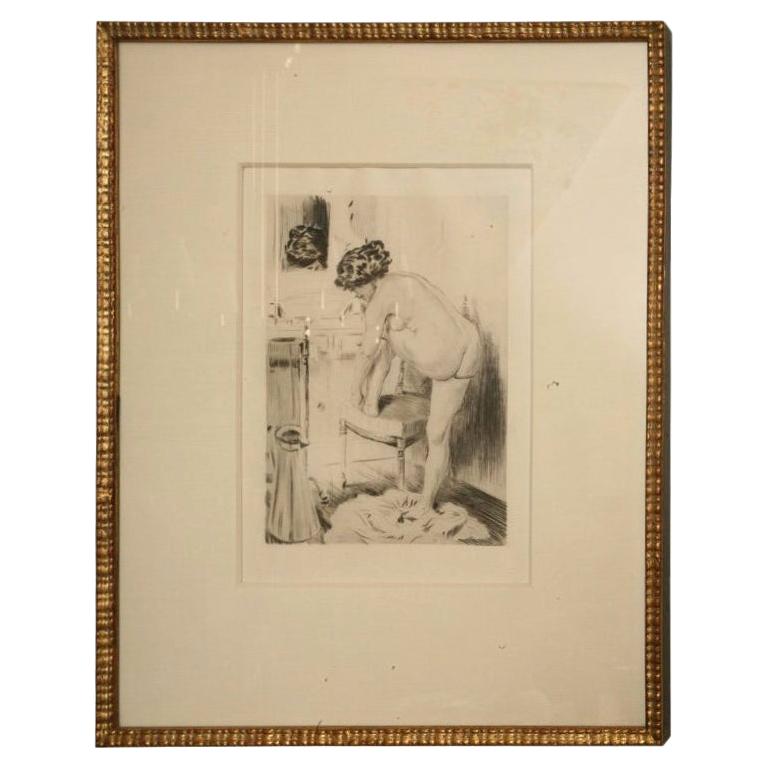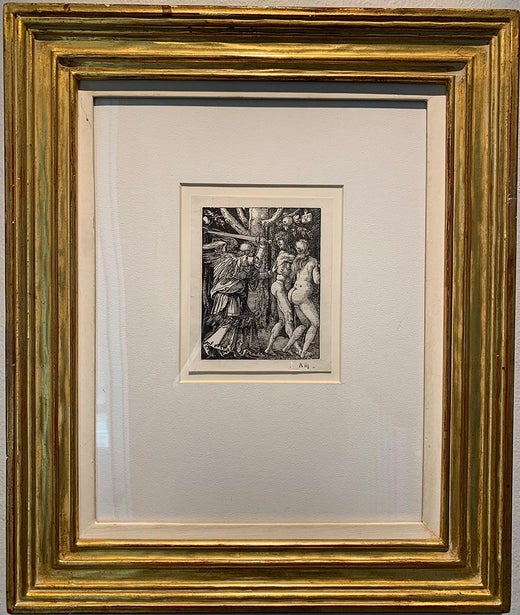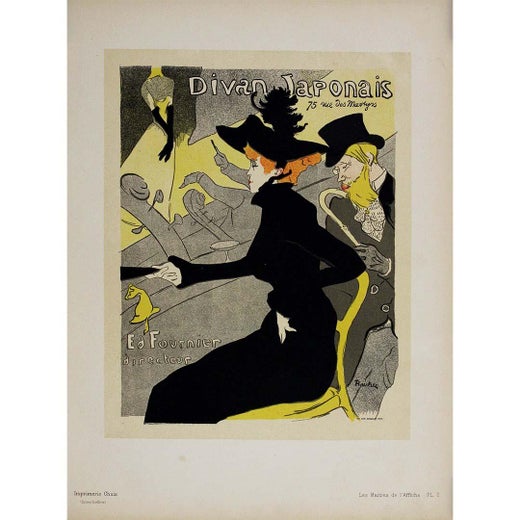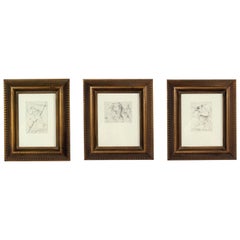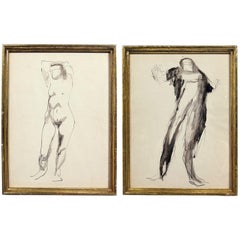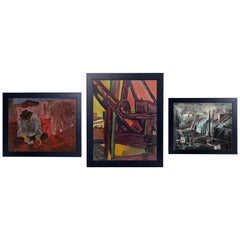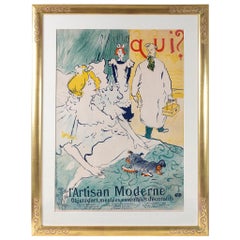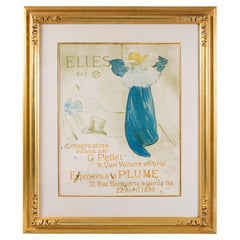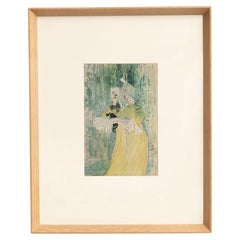Selection of Early Modernist Art - Lautrec Durer et al
About the Item
- Creator:Henri de Toulouse-Lautrec (Artist),Albrecht Dürer (Artist)
- Dimensions:Height: 18 in (45.72 cm)Width: 16 in (40.64 cm)Depth: 0.5 in (1.27 cm)
- Style:Art Nouveau (In the Style Of)
- Materials and Techniques:
- Place of Origin:
- Period:
- Date of Manufacture:1960s
- Condition:Wear consistent with age and use. Very good condition. Some waviness and age fading to paper. Minor surface scratches, rubs, and wear, mainly to the outside edges of the frames.
- Seller Location:Atlanta, GA
- Reference Number:1stDibs: LU871824061342
Albrecht Dürer
Albrecht Dürer revolutionized woodcut printmaking as an artform and his influence over the medium's practitioners has endured for centuries. Revered for his masterfully detailed prints and drawings, the German artist was driven by boundless curiosity. Dürer was the Renaissance personified in 16th-century northern Europe — he was more deeply engaged in the pursuits of the era’s Italian painters than any other artist from the region, an attribute that earned him the title “Leonardo of the North.”
Trained initially as a goldsmith in his father’s workshop, Dürer’s talent for art materialized early, in a self-portrait at the age of 13 in 1484. Held in the Albertina Museum in Vienna, this silverpoint drawing is one of the oldest extant self-portraits in European art.
While Dürer traveled extensively, his two stays in Venice, which took place during the turn of the 16th century, were among the most influential. There he became increasingly acquainted with the work of great Italian artists including Gentile and Giovanni Bellini, Antonio Pollaiuolo, Leonardo da Vinci and a young Raphael. Naturally, Dürer found great inspiration in the Venetians’ theoretical interests, techniques, use of color and more.
Over the course of his career, Dürer received commissions from Frederick the Wise-Elector of Saxony, Emperor Maximilian I and the Holy Roman Emperor Charles V. At one point he was commissioned to draw the first living rhinoceros seen in Europe since the Roman Empire. Despite having never actually seen the animal, Dürer made the now-famous c. 1515 woodcut based on one written account and brief sketch. For years it remained the common interpretation of what rhinos looked like to Europeans.
Dürer’s woodcuts were widely disseminated during his time, and he is the best known artist associated with the Northern Renaissance. His breathtaking technical prowess is most prominent in his three master engravings — Saint Jerome in His Study, Melencolia I and Knight, Death, and the Devil — profoundly influential works that are characterized by rich textures and meticulously detailed imagery.
Dürer’s work is in the collections of many museums, including the National Gallery in London and the Metropolitan Museum of Art in New York, while his former home in Nuremberg, Germany, has been converted into a museum dedicated to his legacy. Important works like Hare and Praying Hands can be found in the Albertina, while his second famous self-portrait from 1500 — which depicts Dürer in a fur-trimmed robe — is on display in the Alte Pinakothek in Munich.
Find original Albrecht Dürer prints and other art on 1stDibs.
Henri de Toulouse-Lautrec
During his brief artistic career, Henri de Toulouse-Lautrec captured the lively and often sordid atmosphere of Montmartre’s late 19th-century dance halls, cabarets, and theaters. Recording the performances he viewed and the establishments he visited on a nightly basis, he functioned as artist and narrator: original Lautrec paintings, drawings, prints, and posters expose the complexities of the quickly changing age in which he lived.
Between 1890 and 1900, Paris saw tremendous growth in its nightlife scene, with nearly 300 café-concerts serving women and men who drank, smoked, and fraternized in ways previously unpermitted to them in public. In such prominent clubs as the Moulin Rouge and less reputable institutions like the Moulin de la Galette, aristocrats often rubbed shoulders with the working class. It was within these establishments that Lautrec found the subjects he would voraciously document over the next decade.
Lautrec chronicled his era largely through printmaking — something few other artists had attempted to do in this medium. From 1891 until his death in 1901, he produced nearly 350 lithographic posters, editioned portfolios, and illustrations for journals and theater programs recounting life in Belle Époque Paris. The rise of color lithography in 1891 ushered in a new form of printmaking, and Lautrec found great success in this medium. This process allowed him to print large posters in color.
Find original Henri de Toulouse-Lautrec posters and prints for sale on 1stDibs.
(Biography provided by Allinson Gallery, Inc.)
- ShippingRetrieving quote...Shipping from: Atlanta, GA
- Return Policy
More From This Seller
View AllVintage 1950s French Mid-Century Modern Prints
Glass, Wood, Paper
Vintage 1950s American Mid-Century Modern Paintings
Wood, Paper
Vintage 1950s American Mid-Century Modern Paintings
Glass, Wood, Paper
Vintage 1930s American Art Deco Paintings
Canvas, Wood
Vintage 1950s American Mid-Century Modern Paintings
Canvas, Wood, Paint
Vintage 1950s American Mid-Century Modern Drawings
Paper, Wood
You May Also Like
Antique 1890s French Art Nouveau Posters
Giltwood, Paper
Antique Late 19th Century French Art Nouveau Prints
Paper
Vintage 1950s French Mid-Century Modern Prints
Paper
Vintage 1950s French Mid-Century Modern Prints
Paper
20th Century American Art Nouveau Prints
Paper
Antique Early 1900s French Art Nouveau Drawings
Silver Leaf
